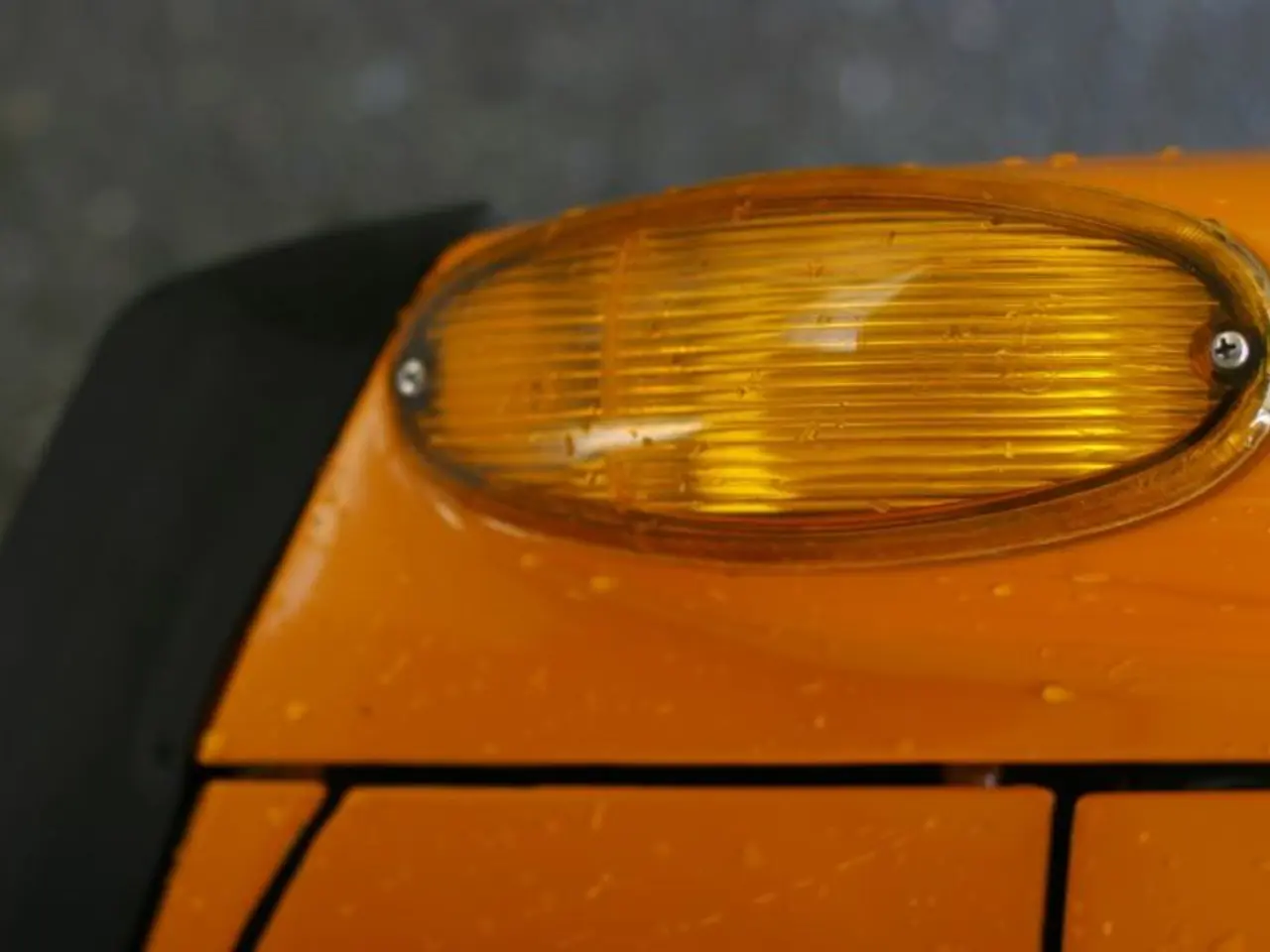Driving less satisfying due to excessive headlight glare?
Headlight Glare During Driving: A Growing Concern on UK Roads
Headlight glare during driving, particularly when towing a caravan, has become a significant issue on UK roads. The high intensity and improper alignment of modern headlights, particularly LED types, combined with the higher positioning of headlights on larger vehicles and the reflective surfaces of caravans, can severely impair vision and reaction time, increasing accident risk.
Causes of Headlight Glare
The high luminous intensity of modern headlights, often exceeding 100,000 candela, can temporarily reduce visual acuity by up to 60% and slow recovery time after exposure. The use of LED headlights, with their brighter, bluish light spectrum, is more glaring compared to traditional halogen bulbs. Misaligned headlights that direct light into oncoming drivers’ eyes rather than the road, higher mounted headlights on SUVs, pickups, or towing vehicles, and reflective surfaces on caravans can all contribute to headlight glare.
Potential Solutions
Addressing headlight glare requires a combination of proper headlight alignment and maintenance, the adoption of advanced adaptive lighting technologies, and safe driving practices when towing. Regularly checking and adjusting headlight aim to avoid shining light in other drivers' eyes and buffing vehicle headlights to maintain clarity are essential steps.
Adaptive or intelligent headlight technologies, such as adaptive LED arrays, dynamic beam pattern control, and glare-free high beams, modulate light intensity and patterns automatically to prevent dazzling other drivers while maintaining the driver’s visibility. Emerging technologies like PDLC (Polymer Dispersed Liquid Crystal) films integrated with light-dependent resistors, which detect intense incoming light and adjust opacity to reduce glare impact, are also promising solutions.
When towing, drivers should reduce speed, increase following distances, and be mindful that caravans increase glare risk by altering vehicle height and reflected light patterns. Ensuring caravan lights meet regulations to minimize excessive brightness or misalignment is crucial. Regulatory improvements, such as the adoption of adaptive driving beams as now permitted in some regions, encourage manufacturers to implement glare-reducing headlights that improve safety for all drivers.
Additional Considerations
Older drivers may be more affected by headlight glare and could consider medical options like eyelid surgery to reduce glare sensitivity. While glare is a serious hazard, it is difficult to track accident data linked directly to glare, but advanced lighting systems have been shown to reduce nighttime crashes significantly.
Government Response
In September 2024, questions were raised in the House of Commons about potential funding for independent research into headlight glare safety implications. The Department for Transport (DfT) commissioned a comprehensive study into headlight glare, which is being conducted by transport researcher TRL since October 2024. The Government has also commissioned independent research to better understand the root causes of headlight glare and develop potential countermeasures, with the results expected in summer 2025.
The DfT's position is that there is no evidence to suggest an underlying road safety issue associated with modern vehicle lighting. However, driving organizations such as the RAC and the AA have lobbied for more research into headlight glare, with RAC senior policy officer Rod Dennis stating that public concern about bright headlights is increasing, but the reasons for glare and what can be done to reduce it aren't clear.
A recent RAC survey in December 2024 showed that 61% of drivers who say they are affected by headlight glare believe the problem has got worse in just 12 months. The issue is not restricted to older drivers, as 70% of 18-24-year-olds surveyed by the AA said they had been blinded by oncoming headlights. It's important to rule out medical problems like cataracts or age-related macular degeneration when experiencing problems with glare, and a trip to the optician is recommended.
In conclusion, addressing headlight glare requires a collaborative effort from drivers, manufacturers, and policymakers. By adopting proper headlight alignment, advanced adaptive lighting technologies, and safe driving practices, we can significantly reduce the risk of accidents caused by headlight glare. The results of the TRL research, scheduled to complete in the summer of 2025, will provide valuable insights into the issue and potential solutions.
- The transportation industry, particularly car manufacturers, should focus on improving car-maintenance practices for headlights to address the growing concern of headlight glare during driving, especially when towing cars.
- In the health-and-wellness sector, older drivers may find relief from headlight glare by considering medical-conditions treatments like eyelid surgery to reduce glare sensitivity.
- The science behind eye-health and vision has shown that high luminous intensity headlights can cause temporary visual acuity reduction by up to 60%, and this is a significant factor in headlight glare.
- The finance sector may need to invest in the development and production of adaptive headlight technologies for cars, as they are promising solutions to reducing glare and improving road safety in the future.
- Lifestyle choices and safe driving practices should be emphasized, such as reducing speed, increasing following distances, and being mindful of glare risks when towing cars or driving vehicles with higher mounted headlights.
- The industry, governments, and regulators must collaborate to ensure that regulations for car headlights are updated to reduce glare risks, such as adopting adaptive driving beams and implementing glare-reducing technologies.




